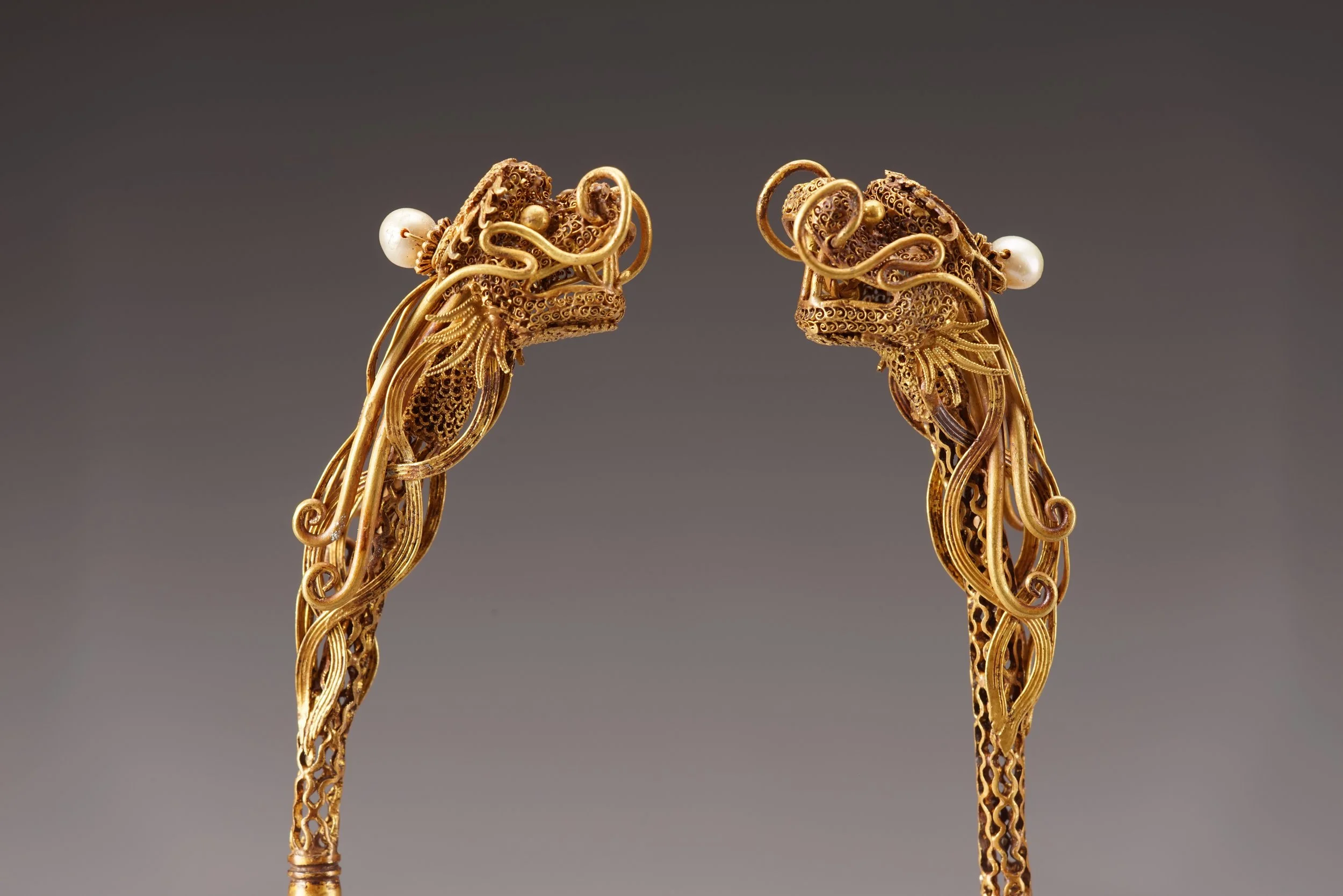Gold Ming: The Splendors and Beauties of Imperial China (14th – 17th Centuries) at Musée National des Arts Asiatiques — Guimet
Gold Ming
The Splendors and Beauties of Imperial China
(14th – 17th Centuries)
September 18, 2024 — January 13, 2025
As codified as it was refined, the art of feminine adornment during the Ming period was among the most delicate and singular in Chinese gold craftsmanship.
Gold has been considered a symbol of wealth and social status since High Antiquity, much like bronze, jade and silk. During the Ming Period (1368-1644), gold craftsmanship achieved unparalleled luxury and delicacy. This unparalleled refinement in the art of jewellery, with its unique and intricate aesthetics, reflects the splendor of the Ming dynasty, regarded today as a golden era of Chinese civilization.
Ming emperors are famous for building the Forbidden City and the Great Wall of China; however the dynastsy also saw significant maritime explorations. By the turn of the 16th century, towns in the south benefitted from this commerce and a new class of wealthy merchants emerged. Luxury products became particularly popular symbols of social status and wealth and were no longer exclusive to the aristocracy.
Gold, jade and silver ornaments were essential additions to the clothing of the elite and aristocratic women’s attire and were closely associated with the ideal of feminine beauty. Some of the most remarkable pieces were decorated with gemstones: rubies, spinels, blue, yellow or green sapphires, or other rare materials such as white or pale-green jade, fresh-water pearls and kingfisher feathers.
The choice of motif was also of decisive importance. In addition to being insignia, they were believed to bring wealth, happiness, health and longevity to the wearer. Flowers and birds were traditionally associated with the seasons and brought good fortune. The prunus evoked the beauty of winter, the peony abundance and spring, the lotus purity and summer, and the chrysanthemum integrity and autumn.
Today, there are very few gold objects left from the Ming era. Made possible by exceptional loans from the Qujiang Fine Arts Museum (X'ian, China), the exhibition invites people to go beyond aesthetic contemplation to learn more about the role gold played in the Ming dynasty, the techniques used in goldsmithing and the significance of motifs and their official symbolism.
Curation
Hélène Gascuel, curator in charge of Chinese textiles and furniture at the musée Guimet
Arnaud Bertrand, curator in charge of Korean and Ancient China collections at the musée Guimet
Click the image below to watch L'Or des Ming. Fastes et beautés de la Chine impériale (14e – 17e siècle).


